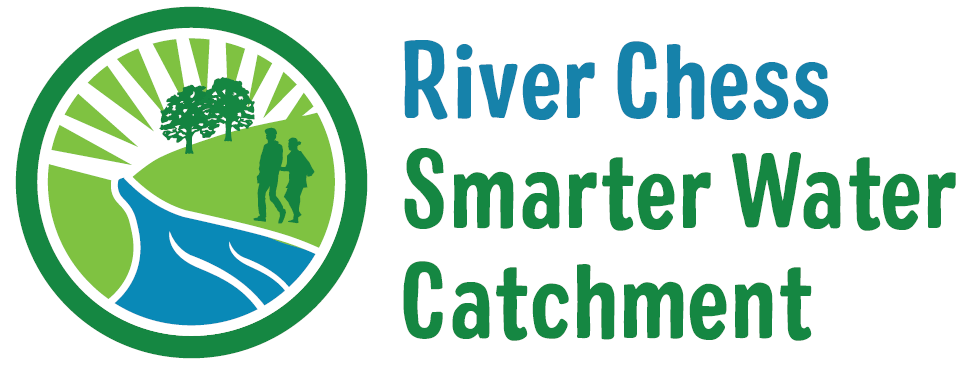
Ecology surveys
Biodiversity is a key indicator of environmental health; our citizen scientists are helping us monitor species abundances and improve habitat quality in the Chess catchment.
The Chess Smarter Water Catchment project, using and collaborating with established national ecological monitoring methods, is collecting a range of data from a number of different citizen science surveys looking at river habitat quality, invertebrate biodiversity and water vole abundances.
Modular River Survey
Also known as MoRPh surveys, this detailed survey technique explores physical habitat quality of both the river channel and riverbank, enabling us to answer questions about diversity of vegetation, siltation of the river channel that can affect fish spawning, and physical complexity of the riverbed amongst many others.
We have so far started using this method to measure the success of restoration work, with many more restoration and intervention projects planned in the coming months.

Riverfly
Riverfly is a long-established method of freshwater invertebrate surveying, designed to classify and count different invertebrate groups since they are a vital part of the food chain and sensitive indicators of water quality. Training and surveying generally takes places in early spring and autumn annually, where you are usually designated a Riverfly site for monthly sampling.
For further details and to see what data Riverfly have been collecting in the River Chess and wier Chilterns for over a decade, please see our affiliated Riverfly Monitoring website.

SmartRivers
This is a new nationwide method of collecting invertebrate species diversity and abundance, whilst also identifying the impacts of organic pollution, nutrient enrichment, sediment, chemicals and flow stress through a water quality scorecard. Samples are collected twice annually in spring and autumn, sent off for analysis and the results can then hopefully be used to inform management initiatives.

Water vole monitoring
Every two years in collaboration with the Wildlife Trust, River Chess Association and Chilterns Chalk Streams Project, surveys are completed along the River from May to September, looking for signs of the rare water vole. Populations have decreased by 32% since 2013, which is worrying news for this keystone species and indicator of healthy river ecosystems.
We are just about to start the 2023 surveying season and hope to therefore have an updated understanding of water vole populations in the River Chess by the end of the year.

Reptiles & Amphibians Monitoring
Populations of our once common amphibian species are in decline in the UK.
This monitoring programme will help us understand the current situation of the populations in the Chess Valley. This is key to planning and prioritising the actions needed to protect their long-term future.

Tracking the impact surveys
The Smarter Water Catchment initiative has teamed up with the Chalk, Cherries and Chairs project to start conducting Tracking the Impact surveys within the Chess catchment in 2023.
These surveys involve monitoring of either breeding birds, butterflies or plant species, offering training of both survey methods and species identification, before you choose a 1 km square to monitor throughout the spring to autumn period.
As Tracking the Impact is an established method of surveying, using Breeding Bird Survey, Wider Countryside Butterfly Survey and National Plant Monitoring Scheme initiatives, you could survey within the Chess catchment, or within a wider area of the Chilterns if you choose.

Monthly Newsletter
Interested in what we’ve been doing?
Sign up to our monthly newsletters and receive regular updates about citizen science survey results, events, projects led by partner organisations and much more.


